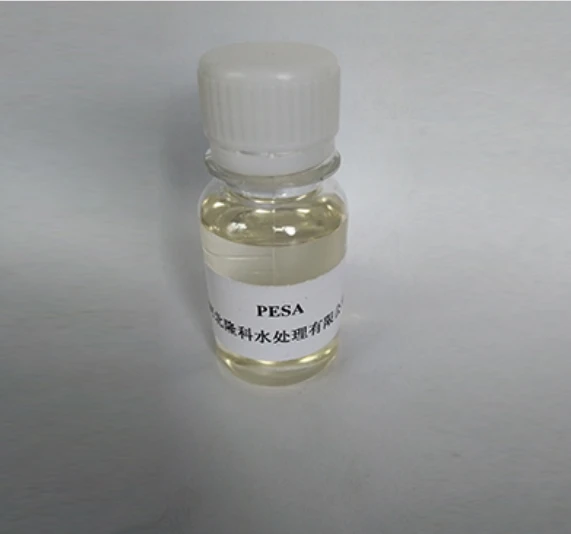Understanding the Mechanisms of Coagulation and Flocculation in Water Treatment Processes
Coagulation and Flocculation Principles and Applications in Water Treatment
Water treatment is a critical process for ensuring that our drinking water is safe and free from harmful contaminants. Among the various methods used in water treatment, coagulation and flocculation play pivotal roles. These processes are essential for the removal of suspended solids, colloidal materials, and other impurities from water, thereby improving its quality.
Understanding Coagulation and Flocculation
Coagulation and flocculation are often used in succession to treat water that contains fine particles or colloids that are too small to be removed by conventional filtration. Coagulation is the first step, which involves the addition of chemicals, known as coagulants, to the water. These coagulants, such as aluminum sulfate (alum) or ferric chloride, are positively charged. When introduced into the negatively charged particles in the water, such as clay, silt, and organic matter, they neutralize the charges, allowing these particles to come together.
Once the charges are neutralized, the particles begin to aggregate in a process known as flocculation. During flocculation, gentle mixing allows the coagulated particles, now referred to as flocs, to collide and bond together to form larger aggregates. These larger particles can then settle out of the water more easily or be removed by filtration.
The Coagulation Process
The coagulation process involves several key stages
1. Rapid Mixing The coagulant is rapidly mixed into the water. This step is crucial as it ensures uniform distribution of the coagulant, which maximizes its effectiveness in destabilizing the particles.
2. Coagulation As the mixing slows down, the coagulants start to interact with the particles. This phase is characterized by the formation of micro-flocs. It is crucial to maintain an optimal pH during this stage, as different coagulants have varying performance based on pH levels.
3. Flocculation In this stage, the mixture is gently stirred to encourage collisions between the micro-flocs, leading to the formation of larger flocs. This portion of the process may take several minutes and requires control of mixing speed and duration to enhance floc formation without breaking them apart.
4. Sedimentation Following flocculation, the water is allowed to sit in a sedimentation basin. The larger, heavier flocs settle to the bottom of the tank, forming sludge that can be removed. The clearer water above the sludge is then directed for further treatment.
coagulation and flocculation

Factors Influencing Coagulation and Flocculation
Several factors can influence the efficiency of coagulation and flocculation processes, including
- Type and Dose of Coagulants Different coagulants may be more effective depending on the specific characteristics of the water being treated, such as turbidity levels and the presence of organic matter.
- pH of Water The pH affects the charge on particles in the water and the solubility of the coagulants. Maintaining an optimal pH range is crucial for effective coagulation.
- Temperature Water temperature can influence the coagulation process, as warmer water can enhance the reaction rates but may also affect the solubility of coagulants.
- Mixing Time and Speed The intensity and duration of mixing during both the coagulation and flocculation phases are essential for achieving good particle collision rates and floc formation.
Applications in Water Treatment
Coagulation and flocculation are widely used in municipal water treatment plants to reduce turbidity and remove microorganisms, organic matter, and heavy metals. Beyond drinking water, these processes are also utilized in industrial wastewater treatment, surface water treatment, and even in the treatment of pool and recreational water.
In addition to their primary application in water treatment, coagulation and flocculation can also be applied in sectors such as food processing, paper production, and oil extraction, highlighting their versatility in addressing various challenges in different industries.
Conclusion
Coagulation and flocculation are crucial techniques in ensuring the safety and quality of water. By effectively removing impurities from water, these processes not only protect public health but also contribute to broader environmental sustainability efforts. Understanding and optimizing these techniques can lead to more efficient water treatment systems, ultimately benefiting communities and industries alike.
-
2 Phosphonobutane 1 2 4 Tricarboxylic Acid (PBTCA) – Superior Scale InhibitorNewsSep.01,2025
-
2 Phosphonobutane 1,2,4 Tricarboxylic Acid (PBTCA): Superior Scale & Corrosion InhibitorNewsAug.31,2025
-
Dodecyldimethylbenzylammonium Chloride: High-Purity DisinfectantNewsAug.30,2025
-
2-Phosphonobutane-1,2,4-Tricarboxylic Acid: Scale & CorrosionNewsAug.29,2025
-
Premium Isothiazolinones | Broad-Spectrum Biocidal SolutionsNewsAug.28,2025
-
LK-319 Special Scale And Corrosion Inhibitor For Steel Plants: Advanced Solutions for Industrial Water SystemsNewsAug.22,2025





